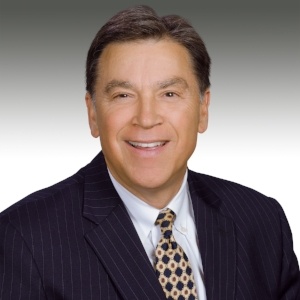
Rusty Stadler, CFP® Client Relationship Manager
Part 2 of a 2 part series.
In our last blog, we described how the shift from defined benefit pension plans to defined contribution plans like 401(k)s has shifted primary responsibility for retirement savings from employers to employees. However, research has indicated that many Americans are not doing a good job of managing this responsibility, which could point to a looming retirement income gap.
As a 401(k) plan sponsor, you are in a unique position to help close this gap. By taking steps to increase enrollment in your plan and encouraging employees to maximize contributions to their retirement accounts, you can play a key role in helping solve this looming problem.
Overcome Employee Inertia to Increase Retirement Plan Participation
One of the main reasons many employees don’t participate in an employer-sponsored 401(k) plan to save for retirement is simply inertia. In other words, they prefer that things remain like they are instead of lowering their take-home pay and having to go through the hassles of enrolling in a retirement plan.
The best way to combat this inertia is to incorporate automatic enrollment into your 401(k) plan design. With this feature, new employees are automatically enrolled in the plan when they start work. If they don’t want to participate, they have to opt-out. Automatic enrollment tends to increase plan participation among demographics that traditionally have low participation rates, such as blue-collar workers.
An added benefit of incorporating auto-enrollment into your plan’s design is that this tends to anchor participants’ contribution rates and asset allocations to the plan’s default options. With auto-enrollment, 401(k) plan participation rates are commonly 90 percent or higher and these percentages tend to hold up over time, with no meaningful increase in opt-out rates.
When they are automatically enrolled in your 401(k) plan, employees generally start saving for retirement earlier and thus enjoy better retirement outcomes. For example, consider two employees both earning the same salary of $50,000 per year who each defer 3% of their salary and receive a 50% employer match up to the first 6% of their salary. However, one employee was 47 years old when he joined his company’s plan and the other was 39 years old.
Assuming 2% annual salary growth and a 6% average annual return, the older employee will have $93,539 in his 401(k) when he turns 65. But because he joined the plan eight years soon, the younger employee’s 401(k) will be worth $185,759 when he turns 65 — or more than double the older employee’s account value. Of course, this is an example. Actual results will defer, perhaps to a material degree. And remember, investing involves risk so please review our disclousre page for details.
Combat the “Present Bias” Effect for More 401(k) Enrollment
Another hindrance to effective retirement savings for many employees is a psychological bias referred to as the “present bias.” In other words, people tend to place a higher value on a benefit they receive now, such as higher take-home pay, than one they’ll receive in the future, such as a higher retirement account value.
A good way to combat this bias is to incorporate auto-escalation into your 401(k) plan design. With this feature, employees’ contribution percentages are automatically increased every year until they reach a cap of 10 percent. Studies have indicated that the average plan participant needs to contribute between 12% and 15% of his or her salary in order to accumulate enough money for a financially secure retirement, but the average participant contribution rate is only between 5% and 7% of salary.
With auto-escalation, participants don’t have to consciously decide to increase their contribution percentages — it happens automatically, which usually translates into higher 401(k) account values at retirement. In one recent study, plans offering auto-escalation for five years or longer saw average deferral rates 21 percent higher than those that didn’t incorporate auto-escalation into the plan design.
More Strategies to Increase Retirement Plan Participation
There are even more strategies you can implement to increase participation in your company’s 401(k) plan, including the following:
- Simplify the process of retirement investing by offering employees static asset allocation models and/or target retirement date funds that make it easier to choose the right investments for their accounts.
- Tailor your participant communication efforts to the demographics of your workforce to emphasize benefits that they will find most attractive.
- Be consistent in your participant communication efforts, using a “drip” strategy that reinforces the benefits of plan participation over and over again over a long period of time.
- Conduct retirement plan education meetings periodically to stress the benefits of plan participation and give employees an opportunity to enroll in your plan on the spot.
- Coordinate one-on-one meetings to address plan participants questions or concerns.
Choosing the Right Retirement Plan Advisor
Your retirement plan advisor should be able to help you implement these and other strategies designed to increase 401(k) retirement plan participation. If your advisor isn’t knowledgeable about these strategies, contact ACG to learn how we can help you increase participation in your plan.



